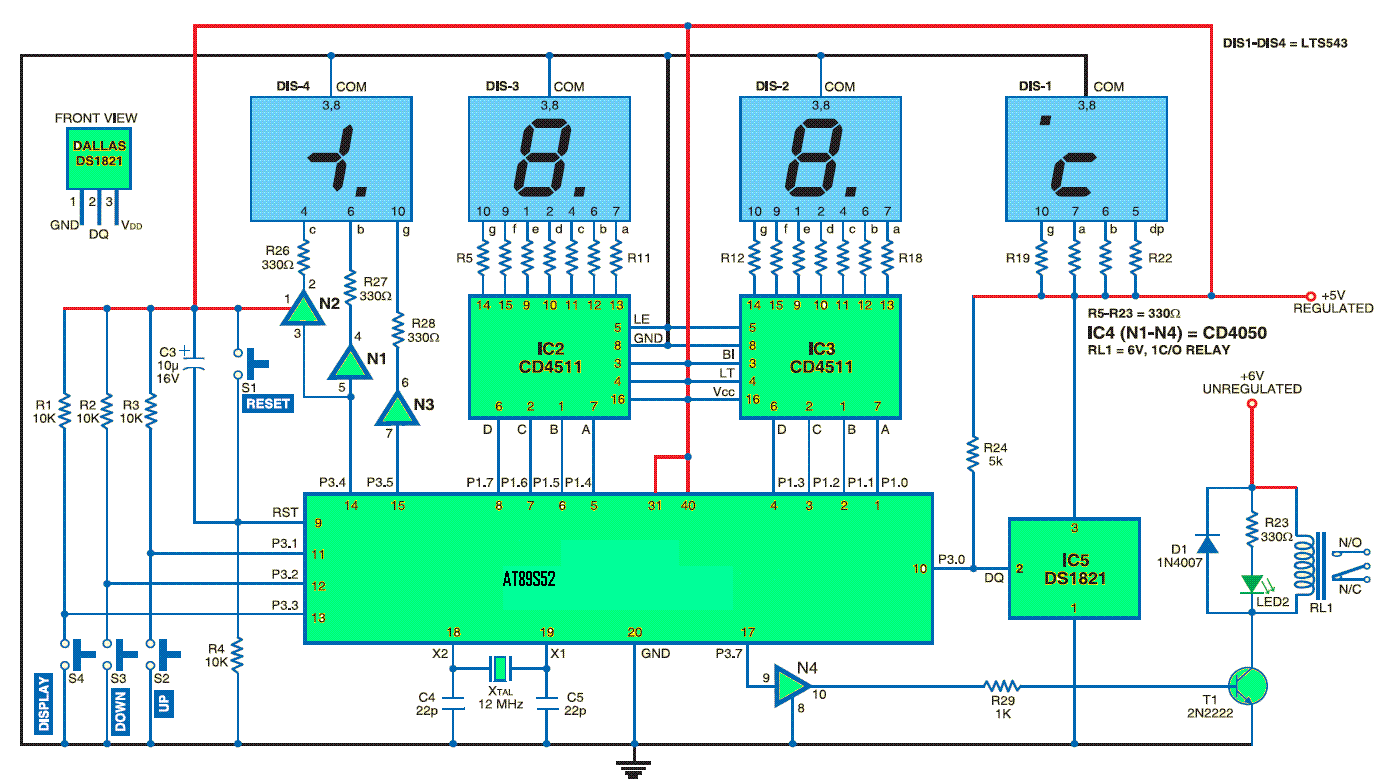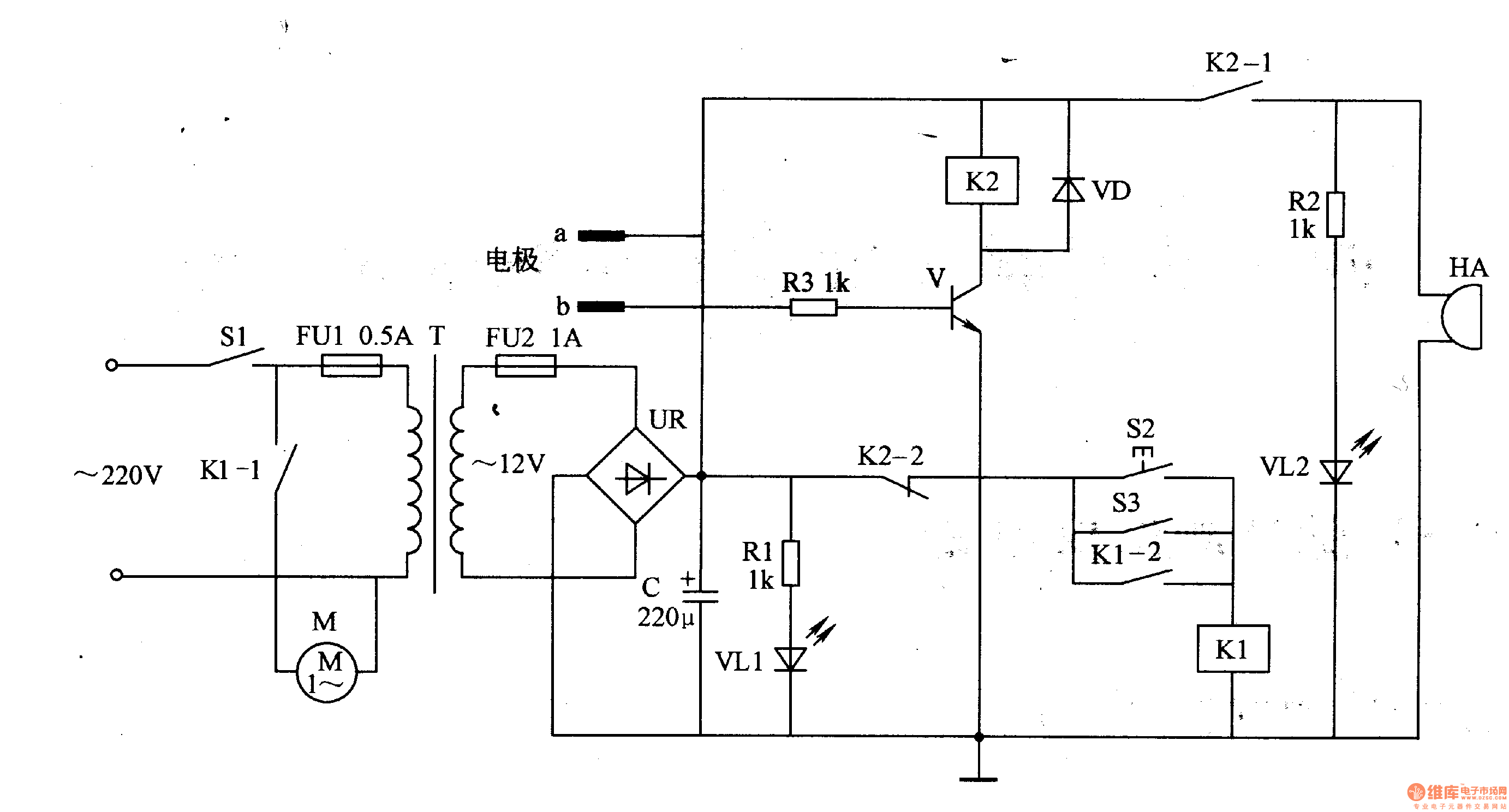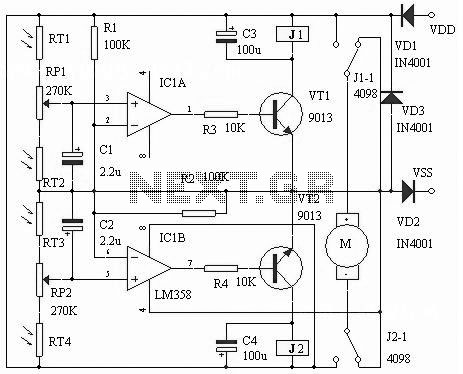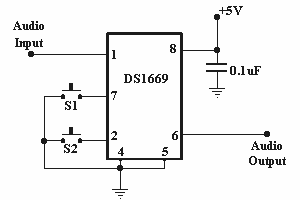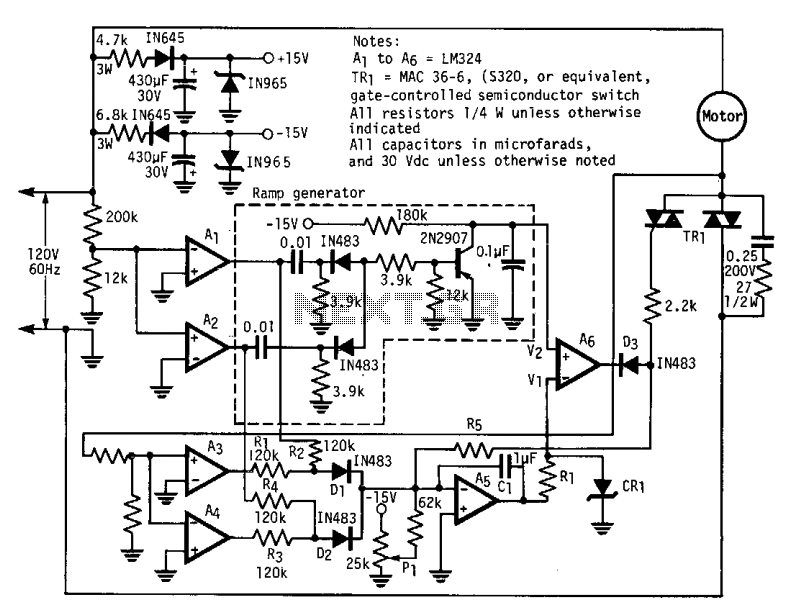
volume controller equalizer
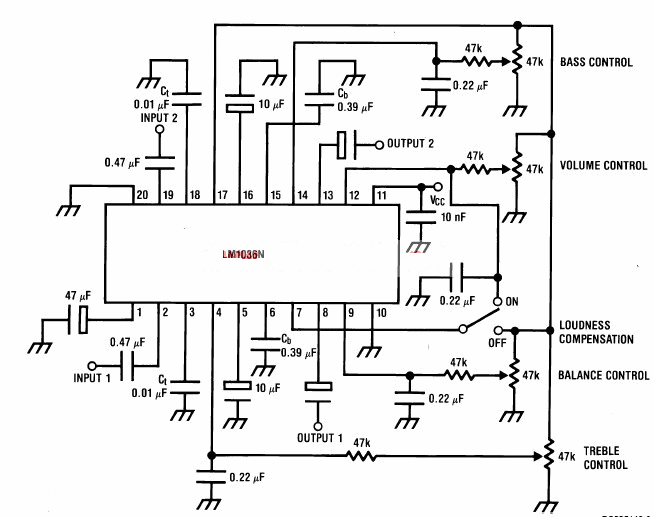
This volume controller equalizer electronic project utilizes the LM1036 DC tone volume controller, which includes a volume and balance circuit suitable for stereo applications. The LM1036 features an additional control input that facilitates simple loudness compensation. It provides four control inputs that manage the bass, treble, balance, and volume functions via DC voltages from a remote control system or from four potentiometers that can be biased by a Zener regulated supply included in the circuit. Each tone response is determined by a single capacitor selected to achieve the desired characteristic.
The LM1036 is a versatile integrated circuit designed for audio applications, particularly in stereo systems where precise control over sound characteristics is essential. The device operates on a dual power supply, typically ranging from ±5V to ±15V, which allows for a wide dynamic range and minimal distortion in audio output.
The volume control is achieved through the adjustment of DC voltages applied to the control inputs. These inputs are connected to either a remote control system or manually operated potentiometers. The use of potentiometers allows for user-friendly adjustments, enabling real-time modifications to audio output levels. The Zener regulated supply ensures that the voltage levels remain stable, which is crucial for maintaining consistent audio performance.
The tone control functions—bass, treble, and balance—are implemented using capacitors that define the frequency response of each control. By selecting appropriate capacitor values, the designer can tailor the audio output to match specific preferences or requirements. The bass control enhances low-frequency sounds, while the treble control boosts high-frequency sounds. The balance control allows for the adjustment of sound levels between the left and right channels, ensuring a well-balanced stereo output.
Incorporating a loudness compensation feature is advantageous in situations where lower volume levels may result in diminished bass and treble response. This feature can be activated through the additional control input, allowing for an automatic adjustment that enhances the listening experience, particularly at lower volumes.
Overall, this volume controller equalizer project is a sophisticated solution for audio enthusiasts and professionals seeking to refine audio performance in stereo applications. Its design emphasizes flexibility, user control, and adaptability to various audio environments.This volume controller equalizer electronic project is designed using LM1036 DC tone volume controller with volume and balance circuit for stereo applications. An additional control input of the LM1036 allows loudness compensation to be simply effected. The four control inputs of the LM1036 volume controller provides control of the bass, treble, b alance and volume functions through application of DC voltages from a remote control system or, alternatively, from four potentiometers which may be biased from a zenner regulated supply provided on the circuit. Each tone response is defined by a single capacitor chosen to give the desired characteristic. 🔗 External reference
The LM1036 is a versatile integrated circuit designed for audio applications, particularly in stereo systems where precise control over sound characteristics is essential. The device operates on a dual power supply, typically ranging from ±5V to ±15V, which allows for a wide dynamic range and minimal distortion in audio output.
The volume control is achieved through the adjustment of DC voltages applied to the control inputs. These inputs are connected to either a remote control system or manually operated potentiometers. The use of potentiometers allows for user-friendly adjustments, enabling real-time modifications to audio output levels. The Zener regulated supply ensures that the voltage levels remain stable, which is crucial for maintaining consistent audio performance.
The tone control functions—bass, treble, and balance—are implemented using capacitors that define the frequency response of each control. By selecting appropriate capacitor values, the designer can tailor the audio output to match specific preferences or requirements. The bass control enhances low-frequency sounds, while the treble control boosts high-frequency sounds. The balance control allows for the adjustment of sound levels between the left and right channels, ensuring a well-balanced stereo output.
Incorporating a loudness compensation feature is advantageous in situations where lower volume levels may result in diminished bass and treble response. This feature can be activated through the additional control input, allowing for an automatic adjustment that enhances the listening experience, particularly at lower volumes.
Overall, this volume controller equalizer project is a sophisticated solution for audio enthusiasts and professionals seeking to refine audio performance in stereo applications. Its design emphasizes flexibility, user control, and adaptability to various audio environments.This volume controller equalizer electronic project is designed using LM1036 DC tone volume controller with volume and balance circuit for stereo applications. An additional control input of the LM1036 allows loudness compensation to be simply effected. The four control inputs of the LM1036 volume controller provides control of the bass, treble, b alance and volume functions through application of DC voltages from a remote control system or, alternatively, from four potentiometers which may be biased from a zenner regulated supply provided on the circuit. Each tone response is defined by a single capacitor chosen to give the desired characteristic. 🔗 External reference
